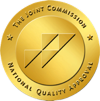The Beginnings of Speed
Speed, often whispered in hushed tones among those familiar with its rush, is primarily amphetamines – primarily synthetic stimulants. From its first moments on the world stage, being given to soldiers to ward off fatigue, to its popularity in the 60s and 70s, speed has remained a constant dark companion on the American landscape.
However, despite its origin, there is a hard reality to its effects.
What Is Speed Drug?
The term ‘Speed’ is street vernacular for drugs that accelerate the body’s functions. Historically, it referred mainly to amphetamines – synthetic stimulants concocted in the labs. The drug surfaced during the 20th century and was initially used for a variety of medical purposes, including to treat depression and to keep soldiers alert during World War II. By the 1960s, however, the addictive potential of speed became evident as it became a favored stimulant for the counter-culture and students pulling all-nighters.

What the Numbers Say
- A 2019 survey by SAMHSA shared that nearly 1.9 million Americans, aged 12 or older, had tasted the tang of methamphetamine, a potent form of speed, in the past year.
- Between 2007 and 2017, meth-related emergency room visits spiraled up by 487%.
- In several western states, meth claimed more lives through overdose deaths than any other.
Effects of Speed Drug
Imagine being on speed. The first brush is euphoria. But fairy tales aren’t real, and neither is this momentary flight. It has various effects on the human body, these include:
- Physical Tremors: A heart that beats too fast, eyes wide with dilated pupils, and a burst of energy that seems limitless. Over days and weeks, the body starts to wear: weight loss becomes noticeable, teeth begin to decay, and the skin shows sores.
- Mind’s Echoes: At first, it’s clarity, alertness. But soon, the walls close in, bringing anxiety, paranoia, and often a rage that wasn’t there before.
- The Chains of Addiction: Speed changes the structure of the brain. With each use, the brain’s own capacity to feel joy diminishes, making the drug not a choice, but a necessity.
- Connections Frayed: Relationships begin to suffer. Families confused, friends distanced. The vibrancy of a person is dulled—their presence is now seems dimmed.
Signs of Speed Drug Use
Addiction, especially to something as potent as speed, doesn’t remain hidden for long. While the signs might be subtle at first, they inevitably become more pronounced. Physically, one might notice weight loss, a certain gauntness to the face, persistent skin sores, dental problems, and the haunted look of insomniac eyes.
Behaviorally, what might first manifest as heightened energy and talkativeness, similar to a sudden burst of creativity, soon morphs into anxiety, irritability, and episodes of anger. It’s not uncommon to see someone showing obsessive actions, like cleaning or repeatedly disassembling and reassembling objects.
Beyond that, paranoia often lurks, and hallucinations, whether auditory or visual, begin to blur the lines of reality.
Speed Paraphernalia
Recognizing the tools associated with speed may be important if you believe a loved one is trapped in the web of speed. While these may vary, here are a few to keep an eye out for.
- Pipes: Typically made of glass or clear crystal, these are used to smoke the drug. Over time, they may become charred or blackened.
- Needles: Some users inject speed directly into their bloodstream. Needles, syringes, and spoons may be found tucked away.
- Razor Blades or Cards: Speed, when in its powdered form, often needs to be chopped or divided. Razor blades or cards (like credit cards) serve this purpose.
- Baggies or Small Containers: These are often used to store or transport the drug.
Overdose – The Darkest Chapter
Overdosing on speed isn’t like fading into a gentle sleep. It’s violent. The heart races like it’s trying to break free from the chest. Body temperatures spike, creating a feverish, burning sensation. Tremors might shake the body, and in severe cases, one could experience seizures.
There’s a palpable sense of paranoia. Some have shared feeling as if the walls are closing in, hearing voices that aren’t there, or seeing things that aren’t real. And amidst this chaos, the vital systems of the body can fail, leading to coma or even death.
Help Overcoming Speed Addiction
Everyone, no matter how lost, holds a potential for redemption.
At EagleCrest Recovery, lives caught by the haunting grip of addiction and need an amphetamine rehab and other addictions are invited to find themselves again. We offer understanding hearts, and the promise of a better tomorrow with real evidence based treatment.
Phone: (844) 439-7627. Let this number be your lifeline, call today.


